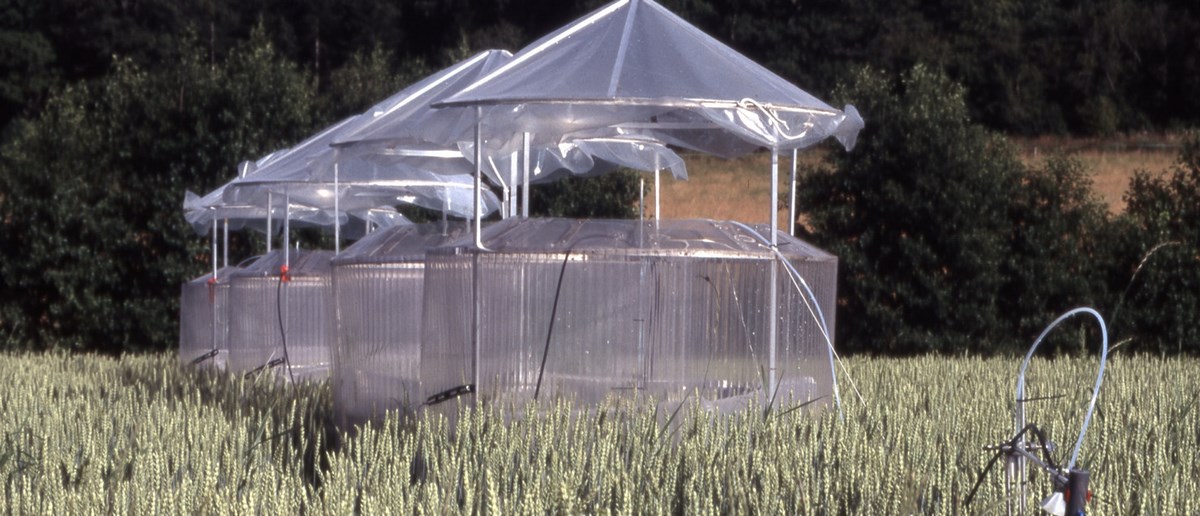Ground-level ozone and carbon dioxide affect harvests

The air pollutant ground-level ozone causes great expense every year by reducing harvests in agriculture and forestry. Håkan Pleijel, Professor at the Department of Biological and Environmental Sciences at the University of Gothenburg is busy investigating how ground-level ozone in combination with climate change and other environmental factors is affecting plants.
Håkan Pleijel and his colleagues have developed a method for estimating the risk of damage to plants caused by ground-level ozone:
"It's not only the ozone content in the surrounding air that is harmful", he explains. "It's when the ozone is absorbed by the plants through the stomata in their leaves that it causes the greatest damage."
Sweden's comparatively humid climate with long summer days increases plants' capacity to absorb ozone through their stomata. That is why even relatively low levels of ground-level ozone can cause damage and reduced harvests.
Håkan Pleijel is also investigating how climate change influences the risk for ozone damage to plants. A changed climate affects how much ground-level ozon is being formed in the air, and also plants' absorption of ozone. Plants are also affected by the increase in ozone content in the air.
Håkan Pleijel has spent many summers working out in the field and placed so-called field chambers over agricultural crops. Inside these chambers, the ground-level ozone and carbon dioxide contents have been increased or decreased by the scientists.
"In this way, we've been able to relate the size and quality of the harvest directly to the levels of ground-level ozone and carbon dioxide respectively that the crops have been subjected to", reports Håkan Pleijel.
Certain plants get visible damage, spots or blotches on their leaves, when the ground-level ozone content is high. In many crops, the most important effect is that their leaves age more quickly, which means a smaller harvest.
"Increased carbon dioxide levels in the air can on the contrary stimulate certain crops, for example wheat, so that they grow better and the harvests increase", says Håkan Pleijel. "At the same time, our research shows that the nutrition levels of cereals diminish since the protein content is reduced if the carbon dioxide level is higher."
Ground-level ozone and carbon dioxide have the opposite effects in several ways. How crops will be affected in the future depends on how the levels of both gases develop. The results of Håkan Pleijel's research have been used as a scientific infrastructure in the UN's air conservation convention in which the European countries have undertaken to reduce emissions.
Håkan Pleijel has also investigated the effects of ground-level ozone on wild plants and for that the Botanical Garden's gardeners were important advisers on their cultivation. Apart from that, he also uses the Garden frequently when teaching students.
The most exciting aspect of doing research, according to Håkan Pleijel is to immerse oneself in data from different experiments and to seek connections:
"I'm an incurable field biologist and this in combination with my deep engagement for the environment has led me into this field of research", he tells us.
Facts about Ozone
Ozone is a gas that exists at heights of 10-40 km in the atmosphere. It protects against the sun's ultraviolet radiation and is vital for life on earth. Ozone is also formed at ground level when nitrogen oxides and volatile organic hydrocarbons react with sunlight. Ground-level ozone is an air pollutant harmful to people and plants.
Facts about Stomata
Stomata (Latin stoma = mouth) are tiny openings in the leaves of plants. By opening and closing their stomata, plants can regulate their gas exchange with the surrounding air. Out of the air entering the stomata, carbon dioxide is absorbed for use in photosynthesis. When the weather is dry, the stomata are closed so that the plant will not lose water by evaporation.






